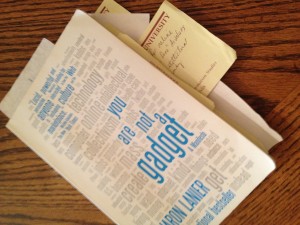We all now live both physical and virtual lives. If you don’t agree, take a look at how close your digital device is at this moment. We are networking, connected, and always online. This evolution of networked culture has challenged me to be both a physical world librarian and a virtual world librarian.
Within this past month, I was coincidentally (I am not sure if that is the right word when you realize how pop culture inspired this post) asked to edit a Gangnam Style video in both worlds.
As a school librarian, I was asked to edit a video showing student engagement. The popular Gangnam Style dance parody was embraced by everyone from kindergarten to our principal, pictured dancing in my library loft.
Just a few days later, as a virtual world librarian leading an exhibit tour to the Museum of Virtual Media, I was asked to edit another Gangnam Style dance- this time with avatars from around the globe. One of the tour guides, from Argentina, gave the participants a dance animation for the closing festivities. The exhibit was built by the University of Washington’s Certificate in Virtual Worlds Class of 2012 and features the evolution of media from ancient cave paintings, through radio & movies, into the future. Being asked to produce a video by two completely different patron communities fascinated me.
We all hear every day, as educators and librarians, about how we now live in a participatory culture. Spending time editing such diverse groups, in both physical and virtual worlds, made participatory culture clear to me in a way that I had never before experienced. Learning theorists, like Lev Vygotsky and John Dewey, proposed that learning is social in nature nearly a century ago, way before digital culture took hold. Witnessing this human desire to be part of a social experience through the global phenomenon of a popular dance video illustrated a new frontier in constructivist learning.
